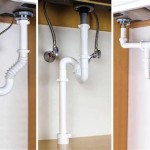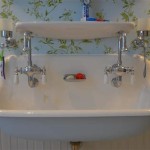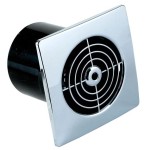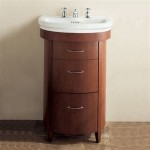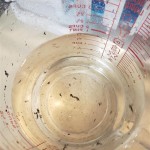How to Fix a Bathroom Sink Faucet From Dripping
A dripping bathroom sink faucet is more than just an annoyance; it can waste significant amounts of water and increase your water bill. Fortunately, fixing a dripping faucet is a relatively simple task that most homeowners can handle themselves with the right tools and some basic knowledge. This guide will walk you through the common causes of dripping faucets and provide step-by-step instructions on how to fix them.
Understanding the Components of a Bathroom Sink Faucet
Before attempting any repairs, it's essential to have a basic understanding of the components that make up a bathroom sink faucet. Most faucets consist of the following:
- Handle: The handle controls the flow of water by turning a stem or cartridge inside the faucet.
- Spout: The spout is the part of the faucet where the water exits.
- Cartridge or Stem: The cartridge or stem regulates water flow through the faucet. Cartridges are commonly used in modern faucets, while stems are more prevalent in older models.
- O-rings and Washers: These rubber seals prevent leaks by creating a tight seal around the moving parts of the faucet.
- Aerator: The aerator is a small, screen-like device at the end of the spout that mixes air with water to create a smooth and even flow.
Understanding these components will help you identify the problem and choose the appropriate solution.
Common Causes of a Dripping Bathroom Sink Faucet
A dripping faucet can be caused by several issues, including:
- Worn-out O-rings or Washers: Over time, the rubber O-rings and washers can become worn, cracked, or hardened, allowing water to leak past them.
- Loose or Damaged Cartridge or Stem: A loose or damaged cartridge or stem can cause water to leak past the sealing mechanism.
- Mineral Deposits: Hard water can leave mineral deposits on the faucet's internal parts, hindering their proper function and causing leaks.
- Loose or Damaged Packing Nut: The packing nut holds the cartridge or stem in place. If it becomes loose or damaged, it can cause leaks.
- Clogged Aerator: A clogged aerator can restrict water flow and lead to dripping.
How to Fix a Dripping Bathroom Sink Faucet
Once you've identified the cause of the dripping, you can start fixing it. Here's a step-by-step guide for common problems:
1. Replacing Worn-Out O-rings or Washers
- Turn off the water supply to the faucet. This is usually done by turning a valve located under the sink or in the basement.
- Remove the faucet handle by loosening the set screw on the side or bottom. This will allow access to the stem or cartridge.
- Remove the stem or cartridge, depending on your faucet type. You might need a wrench or socket to loosen it. Carefully inspect the O-rings or washers for wear and tear.
- Replace any worn or damaged O-rings or washers with new ones of the correct size. You can usually find replacement parts at home improvement stores or online retailers.
- Reinstall the stem or cartridge, making sure it's seated correctly.
- Tighten the packing nut to secure the stem or cartridge.
- Reattach the handle and turn the water supply back on.
- Test the faucet for leaks.
2. Cleaning Mineral Deposits
- Turn off the water supply to the faucet.
- Remove the faucet handle and stem or cartridge.
- Use a small brush or a toothbrush to gently scrub away mineral deposits from the inside of the faucet body and the stem or cartridge.
- You can also soak the stem or cartridge in vinegar for a few hours to help dissolve the deposits.
- Rinse everything thoroughly with clean water.
- Reassemble the faucet and turn the water supply back on.
- Test the faucet for leaks.
3. Replacing a Clogged Aerator
- Turn off the water supply to the faucet.
- Unscrew the aerator from the end of the spout. It may need a wrench or adjustable pliers.
- Clean the aerator by soaking it in vinegar or using a small brush to remove any debris. If the aerator is heavily damaged or clogged, it may need to be replaced with a new one.
- Reinstall the aerator on the spout and tighten it securely.
- Turn the water supply back on and test the faucet for leaks.
Remember to closely inspect the parts of your faucet as you disassemble it. If you notice any other signs of wear, consider replacing them with new ones to prevent future leaks.
If you are unable to fix the dripping faucet yourself, it's best to consult a licensed plumber. They'll have the expertise and tools to properly diagnose and repair the problem.

Properly Fixing A Leaky Sink Faucet Wallside Windows

How To Fix A Dripping Bathroom Faucet

5 Reasons Your Faucet Is Dripping Water How To Fix It

How To Fix A Leaky Faucet True Value

Part 1 Of 2 How To Fix A Dripping Faucet

How To Fix A Leaky Bathroom Sink Faucet

5 Reasons Your Faucet Is Dripping Water How To Fix It

How To Fix A Leaky Faucet Guides For Every Design And Style

Bathroom Faucet Is Leaking Or Dripping

How To Fix A Dripping Moen Faucet Howtolou Com
